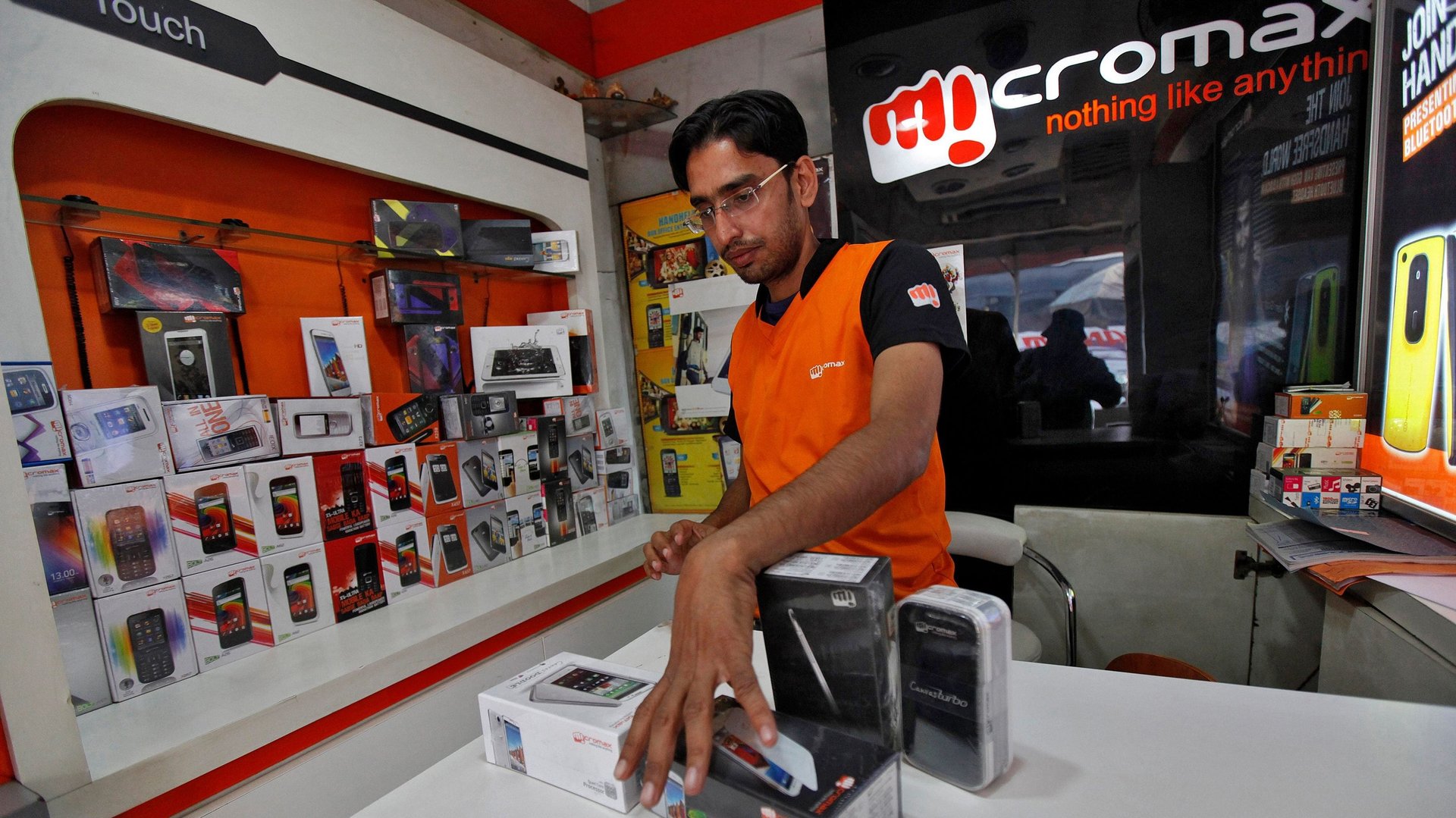Indian companies are the biggest losers in the country’s smartphone race
India’s smartphone users have no brand loyalty whatsoever.


India’s smartphone users have no brand loyalty whatsoever.
Over seven in 10 Indian smartphone users changed the brand of their handsets between April and June this year, according to CyberMedia Research’s (CMR) latest data.
And the churn has benefitted Chinese players the most.
For instance, Xiaomi posted a net gain of 36.9%—the highest—in its user base. Other Chinese brands like Vivo, Oppo, Itel, and Huawei also brought on board more users than they lost.
The data is based on the analysis of over 200 million users across India.
Indian companies turned out to be the biggest losers.
Brands like Intex and Karbonn saw more people ditch their devices than those buying them. Micromax took the biggest hit with a massive 41.2% decline.
“Consumers continue to swap their existing smartphones with new ones offered by Chinese brands, resulting in fast erosion of total installed base of the local Indian brands,” said Kanika Jain, manager for new initiatives at CMR. “This is a very grave situation for (Indian) brands as they cannot work on any strategy to monetise on the base as it continues to deplete every quarter.”
A combination of missteps—playing in the wrong price band, spending on outdated 3G capabilities in the 4G era, and failing to combat the aggressive offline play by Chinese rivals—has sent even a big brand like Micromax tumbling down.
Micromax’s plight
Founded in 2000, Micromax became a household name within a few years.
A decade later, the homegrown player was killing it in the advertising game. In 2013, it brought on Hollywood star Hugh Jackman as a brand ambassador, a move unheard of till then. A year later, it bought the International Tennis Premier League’s Indian franchise and named it “Micromax Indian Aces,” spearheaded by marquee player Roger Federer.
By February 2015, the Gurugram-based company had even dethroned long-time market leader Samsung to become India’s top-selling brand. But soon after, its slide began.
Around this time, Vivo and Oppo joined the fray with their multi-crore cricketing and Bollywood deals.
Micromax was still pouring resources into 3G as rivals moved towards 4G. Its phone specs weren’t as impressive as the new Chinese entrants’. In November 2016, demonetisation dealt a blow to Micromax’s large portfolio of sub-$150 devices, for which transactions mostly occurred in cash.
Today, Micromax’s market share has piped down to just 1%, figures from International Data Corporation (IDC) show.
Its biggest mistake, perhaps, was choosing to play in the rapidly-fading sub-$150 price band, the fastest growing segment being $150-$250. That’s the sweet spot the Chinese manufacturers hit, according to Tarun Pathak, associate director at Hong Kong-based Counterpoint Research.
Meanwhile, migration to low-cost smartphones slowed down following the introduction of affordable 4G-enabled feature phones by Reliance Jio.
“Indian brands [have] not been able to fight [the] onslaught of Chinese marketing, product portfolio, frequent refreshes, design, innovation capabilities, and cameras,” said Navkendar Singh, associate director at IDC. ”A gap of one year with no memorable launches means Micromax’s brand salience has really reduced. Now it’s very difficult to make a comeback.”
Considering that the top five brands capture over 80% of the market, there’s little room for others at the top.